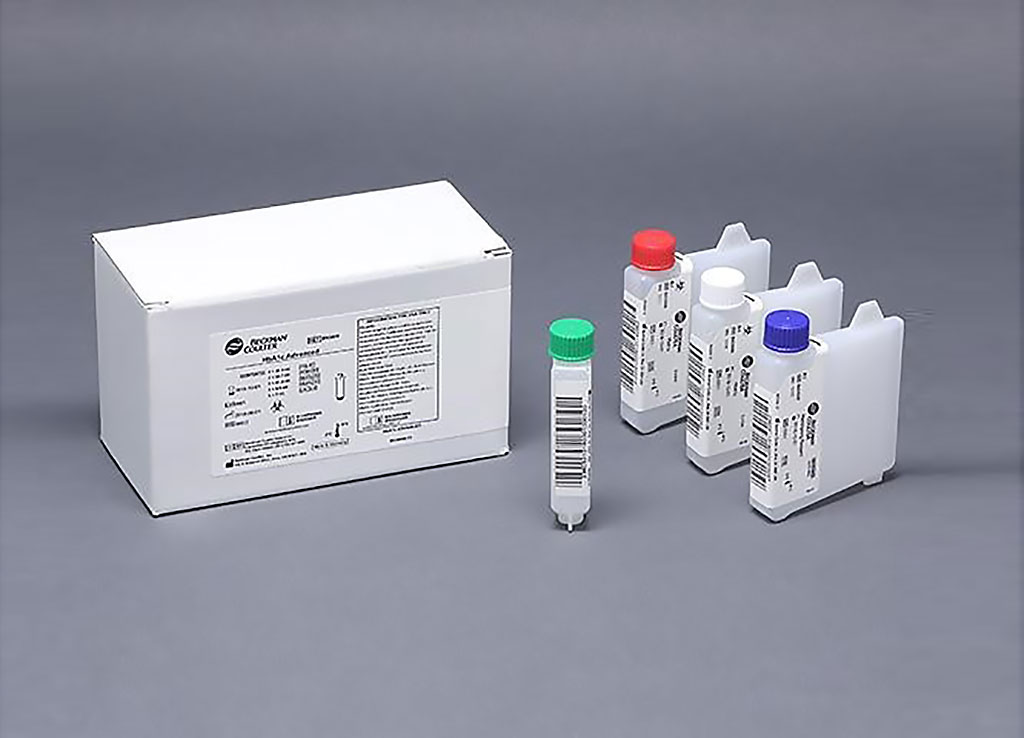Three Factors Distinguish MODY, a Rare Diabetes, in Youth
By LabMedica International staff writers
Posted on 10 Dec 2019
Identifying maturity-onset diabetes of the young (MODY) in pediatric populations close to diabetes diagnosis is difficult. Misdiagnosis and unnecessary insulin treatment are common. MODY is a monogenic, dominantly inherited form of diabetes that typically arises in adolescence or young adulthood, and accounts for 1%-4% of cases of pediatric diabetes.Posted on 10 Dec 2019
Among youth newly diagnosed with diabetes, a simple clinical approach, looking for moderate hyperglycemia (HbA1c less than 7.5%), asking about parental history of diabetes, and checking for autoantibodies associated with type 1 diabetes, should help determine whether young people need to be genetically screened for maturity-onset diabetes of the young (MODY).

Image: HbA1c Advanced Clinical Chemistry Diabetes Assay: to diagnose maturity-onset diabetes of the young (MODY), screening for at least three autoantibodies and HbA1c testing should takes place in all youth at the time of diabetes diagnosis (Photo courtesy of Beckman Coulter)
Scientists from the Skåne University Hospital (Malmo, Sweden) and their colleagues recruited 3,933 Swedish patients aged 1–18 years, diagnosed with diabetes May 2005 to December 2010 from the national consecutive prospective cohort Better Diabetes Diagnosis. Clinical data, islet autoantibodies (GAD antibody, insulinoma antigen-2A, zinc transporter 8A, and Insulin autoantibodies [IAA]), HLA type, and C-peptide were collected at diagnosis. MODY was identified by sequencing GCK, HNF1A, and HNF4A, either through routine clinical or research testing.
The authors reported that overall, 88% (3,471) were positive for at least one of the four autoantibodies. On sequencing, none of those individuals were found to carry the MODY genes, GCK, HNF1A, or HNF4A, via routine clinical or research testing. When 303 of the autoantibody-negative patients were genetically tested, 15% (46) had MODY, resulting in a minimal prevalence of 1.2%. The others had either antibody-negative type 1 diabetes, type 2 diabetes, or other types, such as cystic fibrosis-related diabetes.
Limiting testing to the 73 islet autoantibody-negative patients with HbA1c less than 7.5% (58 mmol/mol) at diagnosis identified 36 out of 46 (78%) patients with MODY (detection rate 49%). On follow-up, the 46 patients with MODY had excellent glycemic control, with an HbA1c of 6.4% (47 mmol/mol), with 42 out of 46 (91%) patients not on insulin treatment. In an adjusted analysis, only plasma glucose and parental history of diabetes remained significant predictors of MODY.
The authors concluded that at diagnosis of pediatric diabetes, absence of all islet autoantibodies and modest hyperglycemia (HbA1c <7.5% [58 mmol/mol]) should result in testing for GCK, HNF1A, and HNF4A MODY. Testing all 12% patients negative for four islet autoantibodies is an effective strategy for not missing MODY, but will result in a lower detection rate and identifying MODY results in excellent long-term glycemic control without insulin. The study was published on November 8, 2019 in the journal Diabetes Care.
Related Links:
Skåne University Hospital









 Analyzer.jpg)




